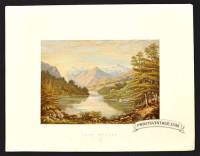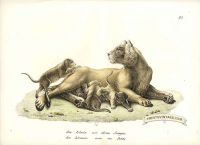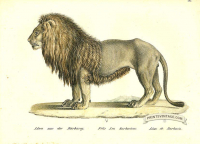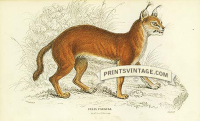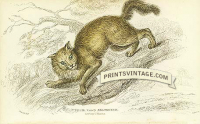Lithography became popular after about 1820. Its great attraction was that drawing on stone was almost as natural as drawing on paper (compared to the older method of engraving a metal printing plate with sharp tool). Click on the pictures of lithographs at the bottom of this page to have a closer look at some.
Here's how it worked:
The artist would draw on a polished stone (usually limestone from a particular quarry in Bavaria) using a special, waxy lithographic crayon, pen or pencil.
The artist would roll black ink over the stone.
The ink would only stick to the wax, not the stone.
The stone would be pressed onto paper to print the image.
The artist would then color the print, either by by painting on water colors, or by using other printing stones to apply colored inks to selected parts of the picture (these prints are known as chromolithographs - the Victorians printmakers were superb at this).
Antique lithographs have a soft, natural appearance compared to prints made from metal plate engravings. The characteristic tiny speckles you see under a magnifying glass are due to the printing surface being limestone.
Chromolithography was invented in about 1830 and was the first true multi-color printing technique (previously color had to be hand painted). A printing stone was used for each color so highly colorful prints needed a lot of stones and a great deal of care in aligning them. The Victorians loved this method of printing because of the rich coloring that could be achieved. Have a look at some superb botanical chromolithographs by Jean Linden here.
Hand made lithographs had their heyday in the period from 1820-1900. Before that, engraving was used to make prints. After that, less expensive photomechanical printing techniques became widespread.


